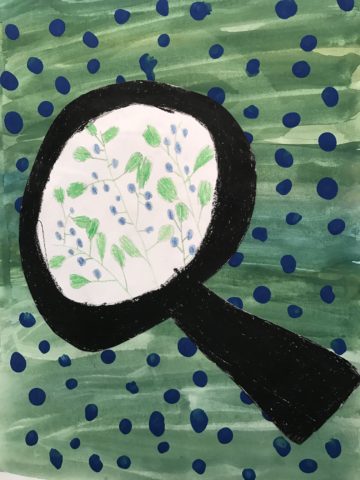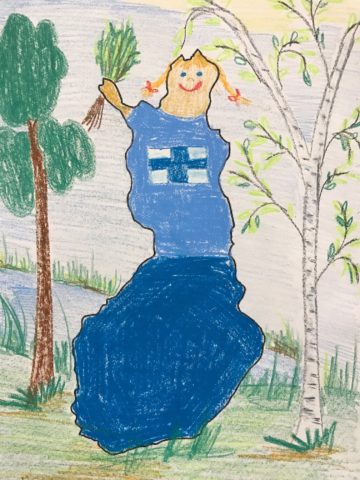Multidisciplinary learning modules – students organize their knowledge into larger entities
In Finland teaching and learning based on the renewed curriculum began in August 2016. The main goals of the new curriculum for basic education are for example to enhance joy and meaningfulness of learning, and to create better opportunities for deep learning. How can we achieve these goals? For instance, by emphasizing the cooperation between subjects and by using multidisciplinary learning modules.

Blueberries, arts and science combine
The multidisciplinary learning modules don’t mean that teaching separate subjects is being abolished. The national core curriculum contains important guidelines for the planning and implementation of the multidisciplinary learning modules:
- Modules should help students to connect knowledge and skills of different subjects, and organise their knowledge into large entities.
- Modules should be interesting and meaningful from the students’ point of view.
- Teachers should plan and co-operate together.
- Students should participate in the planning and implementation of these modules.
- Students should be entitled to at least one integrative, multidisciplinary learning module every school year.
The detailed themes, contents and ways of executing the multidisciplinary learning modules are planned and decided at the local level i.e. in the local curriculum, in schools’ annual plans and in cooperation between different subjects in schools.
It’s important that students take part in planning the module at their school. This is easy to accomplish with cooperative learning methods, for example workstation method, gathered group, snowball technique, learning café and so on.
If I planned a multidisciplinary learning module, I would select the theme that is contemporary, relates to the life of every Finn, combines the content of different subjects, and supports children to notice connections between the topics they study at school and the matters related to real life.
I think that one such topic could be “Finland 100 years”. The year 2017 is important for us, because Finland became independent on December the 6th, 1917. The goal of the multidisciplinary learning module “Finland 100 years” could be understanding what was the starting point for our country, what kind of journey have we made and what is our country like now.

Boy with a Crow. Akseli Gallen-Kallela was one of Finland’s most important artists. This picture is drawn by 3rd grader.
What this theme could mean in different subjects:
History: Enguiry-based learning project: What kind of Finland we had hundred years ago?
Music: Finnish music and composers hundred years ago; What is typical for Finnish music; The Finnish national anthem and its history
Arts: Art and artists hundred years ago; Photography / art exhibitions about Finnish art
Finnish: Videos / digital stories / writings / blogs about Finland; Finnish poetry; The development of Finnish language
Maths: Statistics of Finland
English: Videos / digital stories / writings / blogs about Finland; Facts and stories for foreigners
Home economics: The Finnish cuisine; Food then and now
And of course the Celebration of the Independence Day in December, staff and students invited (Finnish, music and home economic assignments could be integrated in organizing the independence party etc.)
As you can see, it’s actually pretty easy to come up with ideas for different subjects and tasks. But what is missing here is the cooperation between subjects or teachers. I think the biggest challenge in multidisciplinary learning modules is how to make genuine cooperation between subjects and how to get all the teachers commit to the planning and implementation.
The theme of Finland’s centenary celebration year is ”Together”. That is the key point also in multidisciplinary learning modules.

The Maiden of Finland is national personification of Finland.
